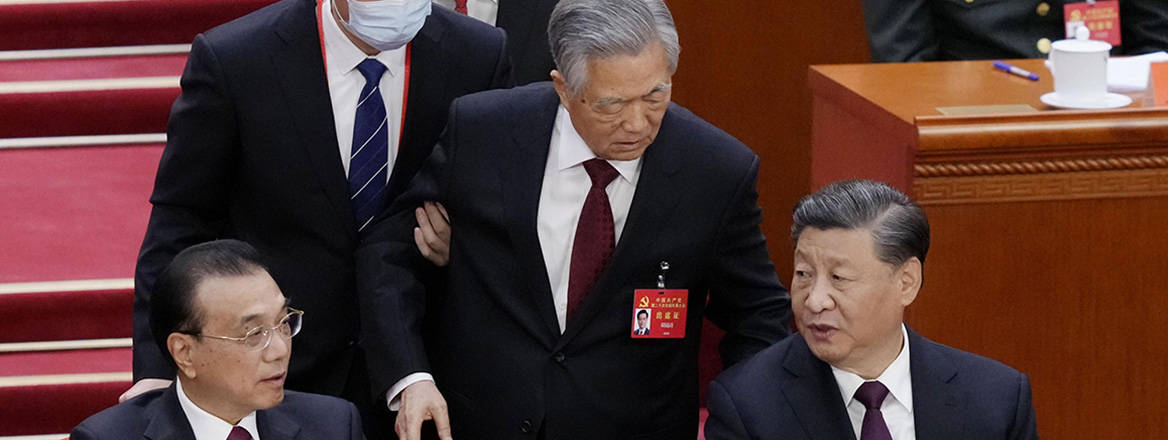Horst Fabian and Andreas Fulda

A press photo from the closing day of the 20th Chinese Communist Party (CCP) Congress has captured the global imagination. It shows the moment former General Secretary Hu Jintao (2002–12) is forcibly removed from the main stage. The highly symbolic picture represents China's 'Führer era', which began in 2012. It is also a public repudiation of China's so-called 'reform and opening up era', which lasted from 1978 until 2012.
What had happened before Hu was walked off the stage, and why does this incident matter? A video recording by Singapore's CNA shows that he attempted to access a red folder in front of him. Hu was prevented from doing so by Li Zhanshu, the outgoing Chairman of the Standing Committee of the National People's Congress.
The folder included documents with a list of names of the newly chosen Central Committee. Had Hu gone through it, he would have realised that his once-powerful China’s Communist Youth League had been completely side-lined. Xi Jinping appears to have anticipated that Hu would visibly express his frustration. Xi thus ordered for Hu to be removed.
The Hu incident reminds us that with the exception of the fall of the Soviet Union in 1991, Communist regimes tend to follow their own political calendar. The thaws of spring are never followed by summer, but always by a political winter: Brezhnev replaced Khrushchev, Husák came after Dubcek.
No comments:
Post a Comment